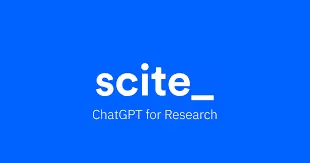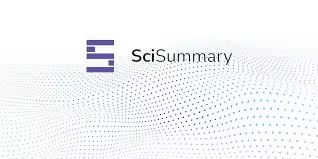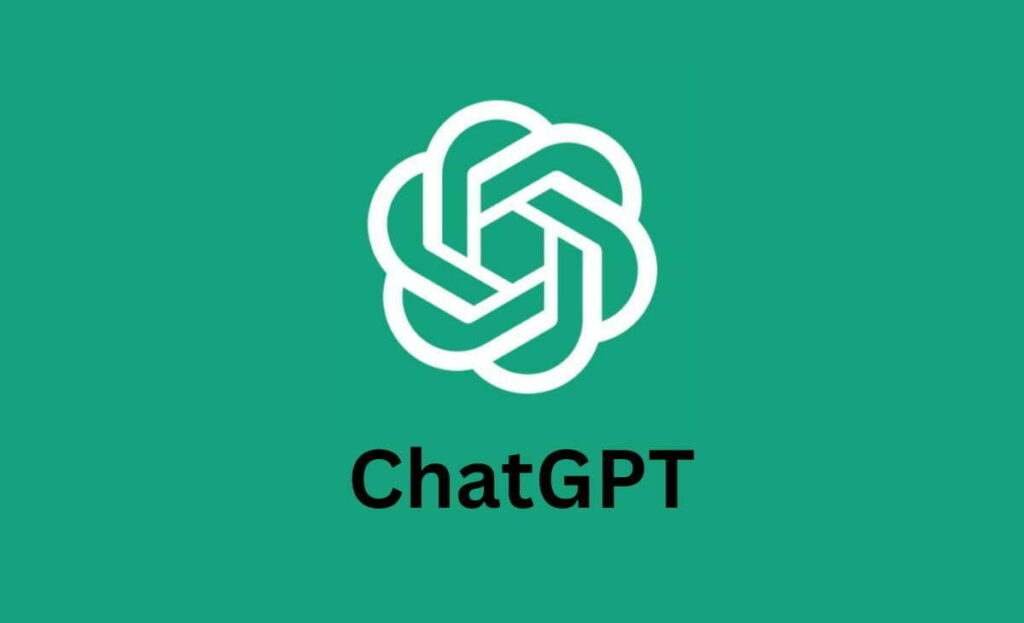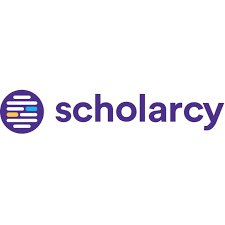Are you drowning in a sea of web articles? Having trouble keeping up with the latest research in your field ? Like many web surfers, you’re faced with the challenge of reading text that can be dense and complicated.
With AI, there’s a way to quickly assimilate the key points of an article without spending hours reading dense text. AI article summarizer is increasingly being used by professionals and companies to boost productivity and stay at the cutting edge of technology
To help you with your reading, browse the key points of the article via our summary, which will take you directly to the corresponding section of the article.
Benefits of using AI to summarize academic papers
AI paper summarizers offer numerous benefits for students and researchers. These tools save time by quickly condensing lengthy academic papers into concise summaries. They also improve comprehension and retention by highlighting key points and main ideas. Additionally, AI summarizers help users stay current with the latest research in their field. By using these tools, you can:
- Process large volumes of papers in a fraction of the time
- Identify the most relevant information for your research
- Grasp complex concepts more easily
- Organize and prioritize your reading list effectively
- Collaborate with colleagues by sharing summarized papers
AI summarization tools offer a range of features, strengths, and potential applications in a variety of research contexts. Here is a complete list of tools for quickly summarizing your synthesis documents.
Claude 3

Technological Foundation: Claude 3 represents the pinnacle of contextual AI comprehension, leveraging advanced natural language processing to decode complex academic texts. Its neural architecture is designed to understand nuanced academic language across multiple disciplines, making it exceptionally versatile.
Key strengths
- Profound contextual understanding that goes beyond surface-level extraction
- Ability to capture subtle argumentative threads and methodological nuances
- Multidisciplinary adaptability, from humanities to advanced technical sciences
- Generates summaries that reflect the deeper intellectual structure of research papers
Ideal use cases
- Interdisciplinary research requiring deep analytical insights
- Complex technical papers with intricate methodological frameworks
- Academic work demanding comprehensive and nuanced interpretation
Claude 3 represents the pinnacle of contextual AI comprehension, leveraging advanced natural language processing to decode complex academic texts. Its neural architecture is designed to understand nuanced academic language across multiple disciplines, making it exceptionally versatile.
| Feature | Description |
|---|---|
| Contextual Comprehension | Advanced NLP for complex academic texts |
| Language Understanding | Nuanced interpretation across disciplines |
| Versatility | Adaptable to multiple academic fields |
| Pricing Options | Claude-2: Free (with usage limits) Claude Pro: $20/month (100K tokens/day) API access: Custom pricing for businesses |
Wiseone
Wiseone.io is an innovative AI-powered browser extension designed to transform online reading and research experiences. Since its recent launch, it has rapidly gained popularity among professionals looking to enhance their digital productivity. The tool offers a range of features that cater to various needs, making it a valuable asset for researchers, students, academics, journalists, business professionals, and content creators.
Core Features
One of the standout features of Wiseone.io is its Focus Function, which provides instant definitions and context for complex concepts. This feature helps users understand unknown terms, organizations, and people by offering contextual insights in real-time. Another key feature is Cross-Verification, which enables fact-checking across multiple sources. This allows users to form independent, well-informed opinions and enhances the credibility of the information they consume.
The platform’s Summarization Capabilities are also noteworthy. Wiseone.io can generate concise summaries of web content in seconds, efficiently extracting key information and supporting multiple languages. The “Ask Anything” feature allows users to ask questions about online content and receive AI-generated answers with source references, ensuring contextually relevant responses.
Additionally, Wiseone.io offers Exploration Recommendations, generating curated resource lists and suggesting related content and research materials. This feature facilitates a deeper understanding of the topics being researched.
Wiseone pricing plan
Detail pricing plans
|
Pros:AI-powered browser extensionMulti-language supportContextual insightsPDF analysis capabilitiesEnhances web search productivity
Cons:Limited free plan featuresPotential privacy concernsDependency risk on AIOccasional compatibility issues |
||||||||||||
| Key Features
Focus function for complex concepts Cross-verification of information Ask Anything feature Deep summarization Access to advanced AI models (GPT-4, Mistral Large) |
|||||||||||||
| Ideal user profiles
🎓 Students
🔬 Researchers 💼 Professionals ✍️ Content Creators 📚 Academics |
|||||||||||||
Paper Digest

Paper Digest is an advanced AI solution designed to transform complex academic and research documents into concise, comprehensive summaries. While specific details about Paper Digest are not provided in the search results, it can be inferred that this tool focuses on extracting key insights from research papers while maintaining the semantic integrity of the original document. Paper Digest likely offers features such as customizable content generation, coverage of multiple document types, and the ability to keep users informed about trending topics in their field of study.
| Capability | Technical Specification |
|---|---|
| Content Generation | Highly controllable AI-driven summarization |
| Document Coverage | Multiple academic and research document types |
| Information Depth | Rich, context-aware content generation |
Pros and cons analysis
| Pros | Cons |
|---|---|
| Easily controlled content generation Comprehensive coverage of multiple document types Information-rich content generation Keeps users current on trending topics |
May require specific keywords for optimal results Limited customization options for summary length Potential for oversimplification of complex topics |
Scite

Scite is an innovative AI-powered research tool that revolutionizes how researchers evaluate scientific literature. It uses Smart Citations to classify references as supporting, contrasting, or merely mentioning cited claims, providing a comprehensive context for each citation. This feature allows users to quickly assess the credibility and impact of research articles. Scite also offers an AI-powered assistant that can answer specific research questions based on real findings, streamlining the research process. With its browser integration and full-text access to research articles, Scite has become an essential tool for researchers, students, and industry experts seeking to enhance the quality of their scientific inquiries.
| Feature | Functionality |
|---|---|
| Citation Context Analysis | Detailed examination of research references |
| Visual Citation Mapping | Graphical representation of research networks |
| Research Impact Assessment | Quantitative and qualitative citation analysis |
Pros and cons analysis
| Pros | Cons |
|---|---|
| Provides citation context and impact analysis Helps identify supporting or contrasting citations Offers visual representation of citation patterns Integrates with other research tools |
Learning curve for new users May have limited coverage in some niche fields Requires subscription for full feature access |
Glasp

Glasp is an innovative platform designed to simplify academic summarization and foster knowledge sharing through a social and collaborative approach.
Main features
- Collaborative highlighting: Allows users to highlight and share key sections of documents.
- Social learning: Encourages interaction and collaboration to enrich collective knowledge.
- Cross-platform integration: Works with various formats and common productivity tools.
Target audience
Students, researchers, research professionals, and knowledge enthusiasts looking for an interactive way to share academic content.
| Pros | Cons |
|---|---|
| Encourages social interaction and collaboration among users. | Less suitable for users who prefer individual work styles. |
| Offers intuitive highlighting and sharing tools for research notes. | Lacks advanced summarization or detailed technical capabilities. |
| Great for fostering collective understanding of academic topics. | Requires time to build a network of active collaborators. |
SciSummary

SciSummary is a tool designed to create precise, automated summaries of scientific documents. It simplifies complex material while maintaining the technical accuracy essential for research.
Main features
- Automated summarization: Produces clear, concise summaries of lengthy scientific papers.
- Technical accuracy: Retains intricate details necessary for academic and scientific use.
- Adaptability: Works well across various research fields, offering great versatility.
Target audience
Scientific researchers, PhD students, research professionals, and academic librarians looking for efficient ways to synthesize academic content.
| Pros | Cons |
|---|---|
| Produces highly accurate and detailed automated summaries. | Lacks collaborative learning and social interaction features. |
| Saves time by condensing complex documents into digestible summaries. | Specialized for scientific research only, not general knowledge sharing. |
| Adapts to various research disciplines, making it highly versatile. | May misinterpret highly interdisciplinary topics in some cases. |
ChatGPT (GPT-4)

Technological Mechanism: Built on a massive transformer architecture, ChatGPT excels in generative language processing, capable of understanding and reconstructing complex textual information with remarkable flexibility.
Key strengths
- Rapid summary generation across diverse academic domains
- Dynamic summary reformatting based on user requirements
- Broad linguistic adaptability
- Quick comprehension of varied research styles and formats
Ideal use cases
- Researchers needing quick, adaptable paper overviews
- Cross-disciplinary research requiring flexible summarization
- Educational contexts demanding varied explanation styles
Unique Differentiation: ChatGPT’s standout feature is its chameleon-like ability to reframe academic content, making complex research accessible to different audience levels.
Built on a massive transformer architecture, ChatGPT excels in generative language processing, capable of understanding and reconstructing complex textual information with remarkable flexibility.
| Capability | Benefit |
|---|---|
| Generative Language Processing | Reconstructs complex textual information |
| Transformer Architecture | Enables understanding of diverse texts |
| Flexibility | Adapts to various summarization needs |
Princing plan
| Feature | Free | Plus | Pro |
|---|---|---|---|
| Monthly Price | $0 | $20 | $200 |
| GPT-4o Access | Limited | Limited | Unlimited |
| Voice Mode | Standard | Standard & Advanced | Unlimited Audio |
| Image Generation | Limited | Extended | Unlimited |
| Custom GPTs | ✓ | ✓ | ✓ |
| Additional Features | Basic | New Feature Testing | Sora Video, Operator Preview |
Scholarcy

Technological Design: Scholarcy is engineered specifically for academic research, with algorithms tailored to extract and visualize research information efficiently.
Key Strengths:
- Automated generation of graphical research abstracts
- Rapid comprehension of academic papers
- Systematic extraction of key research components
- Visual representation of complex research structures
Ideal Use Cases:
- Researchers requiring quick paper comprehension
- Academic literature review processes
- Research screening and initial evaluation
Unique Differentiation: By providing graphical abstracts, Scholarcy transforms traditional text-based summaries into more engaging, visually digestible research insights.
Scholarcy is engineered specifically for academic research, with algorithms tailored to extract and visualize research information efficiently.
| Feature | Function |
|---|---|
| Specialized Algorithms | Extract research information efficiently |
| Visualization | Present research data graphically |
| Academic Focus | Tailored for scholarly content |
| Pricing Plans | Free: Limited features, 3 papers/month Individual: $9.99/month or $99.99/year Team: Custom pricing for 5+ users Enterprise: Tailored solutions, custom pricing |
Elicit

Technological Approach: Elicit represents a next-generation AI research assistant, focusing on deep research synthesis and methodological extraction.
Key Strengths:
- Advanced research question identification
- Methodological detail extraction
- Literature review optimization
- Sophisticated research connection mapping
Ideal Use Cases:
- Complex literature reviews
- Interdisciplinary research synthesis
- Detailed methodological analysis
Unique Differentiation: Elicit goes beyond summarization, acting as an intelligent research partner that helps researchers uncover deeper research insights.
Elicit represents a next-generation AI research assistant, focusing on deep research synthesis and methodological extraction.
| Functionality | Research Benefit |
|---|---|
| Deep Research Synthesis | Comprehensive understanding of research landscape |
| Methodological Extraction | Detailed analysis of research methods |
| AI Research Assistance | Enhanced research productivity and insights |
| Pricing Options | Free: $0/month (Basic features) Plus: $10/month (Enhanced capabilities) Pro: $42/month (Advanced features) Enterprise: Custom pricing |
Research Rabbit

Research Rabbit represents a paradigm shift in academic exploration. Unlike traditional research databases, this innovative platform acts as an intelligent mapping system, transforming academic research from a linear process into an interconnected network of knowledge.
Research Rabbit’s sophisticated AI algorithms analyze scholarly works, revealing hidden relationships between research papers across disciplines. Researchers can now visualize citation networks, track intellectual lineages, and discover unexpected connections that might have remained obscured through conventional research methods.
For PhD students, interdisciplinary researchers, and academic explorers, Research Rabbit offers more than just a summarization tool—it provides a dynamic research discovery platform. Its intelligent recommendation system suggests relevant papers, helping researchers navigate the increasingly complex academic landscape with unprecedented efficiency.
| Pros | Cons |
|---|---|
| Intelligent paper recommendation Visual representation of research connections Time-saving literature discovery |
May have limited database coverage Potential for algorithmic bias in recommendations Learning curve for new users |
Humata.ai

Humata.ai represents the cutting edge of artificial intelligence in document analysis. This platform goes beyond simple summarization, employing advanced natural language processing to extract nuanced insights from complex academic and technical documents.
Picture an AI that doesn’t just read documents but truly comprehends them. Humata.ai analyzes texts across multiple formats,PDFs, research papers, technical documents, providing contextual understanding that goes far beyond surface-level extraction. Its algorithms can compare documents, identify key arguments, and synthesize complex information into digestible insights.
For researchers dealing with intricate, specialized documents, Humata.ai acts like an intelligent research assistant. It can handle multi-format documents, supporting interdisciplinary research that often requires navigating diverse source materials.
| Pros | Cons |
|---|---|
| Advanced document analysis Automated insight extraction Potential for handling multiple file formats |
May require significant computing resources Possible limitations in specialized fields Potential privacy concerns with document uploads |
QuillBot

QuillBot emerges as a crucial ally in academic writing, addressing one of the most challenging aspects of research: effective communication. More than a simple paraphrasing tool, it serves as an intelligent writing enhancement platform.
Its multiple paraphrasing modes help researchers refine their language, ensuring clarity while maintaining academic rigor. By providing grammar checking, citation generation, and writing improvement suggestions, QuillBot helps scholars transform rough drafts into polished manuscripts.
Particularly valuable for non-native English speakers and students, QuillBot bridges linguistic gaps, making academic writing more accessible and professional.
| Pros | Cons |
|---|---|
| Multiple paraphrasing modes Grammar checking capabilities Citation generator |
May alter original meaning if not used carefully Limited free version Not specifically designed for academic paper analysis |
Enago Read

Enago Read specializes in converting complex academic papers into concise, meaningful summaries. Its AI-powered platform focuses on key point extraction, visual summary generation, and rapid research comprehension.
For researchers conducting literature reviews or screening potential research sources, Enago Read offers an efficient solution. Its algorithms can distill lengthy academic papers into focused insights, helping scholars quickly assess the relevance and significance of research works.
| Pros | Cons |
|---|---|
| Automated paper summarization Potential for visual representation of key points Time-saving for literature reviews |
May oversimplify complex research Possible limitations in niche academic fields Potential subscription costs for full features |
Save time and boost productivity with summarize papers
AI paper summarizers are game-changers for students and researchers, offering unparalleled time savings and productivity boosts. With these tools, you can:
- Condense lengthy papers into concise summaries in minutes
- Focus on the most critical information without getting bogged down
- Streamline your research process and get more done in less time
- Quickly grasp key concepts and main points of complex papers
- Efficiently review and analyze large volumes of academic literature
By leveraging the power of AI, you can supercharge your research efficiency, freeing up valuable time for deeper analysis, critical thinking, and original work. These cutting-edge tools are essential for anyone looking to stay ahead in today’s fast-paced academic landscape.
Improve comprehension and retention from of your documents
- AI-generated summaries highlight key concepts and main ideas, making it easier to grasp the essence of complex papers
- Concise summaries help you focus on the most relevant information, reducing cognitive load and improving retention
- Summaries serve as quick references, allowing you to revisit and reinforce important points without re-reading entire papers
AI paper summarizers not only save time but also enhance your understanding and memory of the critical aspects of academic papers. By distilling complex information into easily digestible summaries, these tools enable you to effectively process and retain knowledge, ultimately boosting your research productivity and learning outcomes.
How AI paper summarizers work ?
AI paper summarizers leverage advanced natural language processing (NLP) and machine learning algorithms to analyze and condense lengthy academic papers. These tools employ either extractive or abstractive summarization techniques. Extractive methods identify and extract key sentences from the original text, while abstractive approaches generate entirely new summaries that capture the essence of the paper. By training on vast datasets of scientific literature, AI summarizers continuously improve their ability to comprehend complex content and deliver accurate, concise summaries.
Natural language processing and machine learning
AI paper summarizers leverage natural language processing (NLP) and machine learning algorithms to analyze and condense academic papers. These technologies enable the software to:
- Understand the semantic meaning of the text
- Identify key concepts, findings, and conclusions
- Generate concise summaries that capture the essence of the original paper
Through continuous training on vast datasets, AI models learn to produce accurate and coherent summaries.
Extractive vs. abstractive summarization techniques
| Extractive Summarization | Abstractive Summarization |
|---|---|
| Selects key sentences from the original text | Generates new sentences that capture the essence of the text |
| Preserves the original wording and structure | Paraphrases and condenses information |
| Less complex and faster to implement | More advanced and computationally intensive |
Extractive and abstractive summarization techniques are two distinct approaches used by AI paper summarizers. Extractive methods identify and extract the most relevant sentences from the original text, while abstractive methods generate new, concise sentences that capture the core ideas. Although extractive summarization is simpler and faster, abstractive summarization can produce more coherent and natural-sounding summaries. The choice between these techniques depends on the specific requirements of the user and the capabilities of the AI tool being used.
Our top 5 AI-powered paper summarizer tools
Choosing the right AI-powered paper summarizer is crucial for streamlining your research process. The following table compares the top tools based on key features, pricing, and ease of use.
| Tool | Key Features | Pricing | Ease of Use |
|---|---|---|---|
| Claude 3 | Contextual comprehension, multidisciplinary adaptability, deep analytical insights | – Free Tier: Limited messages – Claude Pro: $20/month – Team Plan: $30/month – API: Varies (e.g., $3-$15 per million tokens) | Advanced |
| Paper Digest | Customizable content generation, multiple document type coverage, trend tracking | – Yearly: $6.66/month – Half-Yearly: $7.99/month – Monthly: $10.99/month | User-friendly |
| Scite | Smart Citations, AI-powered research assistant, citation context analysis | – Monthly: $20/month – Yearly: $12/month | Moderate |
| Scholarcy | Graphical research abstracts, rapid comprehension, visual representation of research structures | – Browser Extension: Free – Personal Library: $9.99/month – Academic License: $8,000+/year | User-friendly |
| Wiseone | AI Assistant, Cross-check, Ask Anything, Summarize, Explore | – Free Version: 10 daily query credits – Pro Upgrade: $9.90/month | User-friendly |
Comparison of features and pricing
When it comes to AI document summarization tools, there’s a wide range of functionality and pricing options to consider. Some tools offer basic summarization capabilities for free, while others offer advanced features such as custom summary lengths, multiple file formats, and API integration at a premium price. It’s essential to compare the features and prices of different tools to find the one that best suits your budget and your needs as a student or researcher.
For professional and business profiles, we’ve put together a simple table below, with notes to help you see the benefits of the tools according to your profession.
Comparative ranking of tools for professionals
| Tool | Rating | Best For |
|---|---|---|
| Wiseone | ⭐⭐⭐⭐⭐ | Decision-makers, analysts, lawyers, researchers |
| Claude 3 | ⭐⭐⭐ | Professionals needing versatile AI assistance |
| Paper Digest | ⭐⭐⭐⭐ | Academics monitoring research trends |
| Scholarcy | ⭐⭐⭐⭐ | Researchers needing quick visual understanding |
| Scite | ⭐⭐⭐⭐ | Academic researchers assessing publication impact |
Ease of use and integration with other tools
When choosing an AI paper summarizer, ease of use and seamless integration with your existing research tools are crucial factors. The best AI summarizers offer:
- Intuitive interfaces that require minimal technical knowledge
- Compatibility with popular file formats like PDF, DOC, and TXT
- Integration with reference management software such as Mendeley and Zotero
- Browser extensions for quick summarization of online articles
[NOMBRES_PHRASES] By prioritizing user-friendly design and interoperability, top AI paper summarizers ensure that you can efficiently incorporate them into your research workflow without disrupting your existing processes or learning complex new systems.
Best practices for using AI paper summarizers
To get the most out of AI paper summarizers, choose a tool that aligns with your specific needs and research goals. Always verify and edit the AI-generated summaries to ensure accuracy and clarity. When incorporating summarized content into your work, properly cite and reference the original papers to maintain academic integrity. Regularly evaluate the effectiveness of your chosen summarizer and adjust your workflow as needed.
Choosing the right tool for your needs
When selecting an AI paper summarizer, consider your specific requirements and research goals. Look for tools that offer customizable settings, allowing you to adjust the length and level of detail in the generated summaries. Some summarizers specialize in certain academic disciplines, so choose one that aligns with your field of study. Evaluate the tool’s ability to handle different file formats and its compatibility with your existing research workflow. Don’t forget to assess the summarizer’s user interface and ease of use to ensure a seamless experience. By taking the time to find the right tool, you’ll maximize the benefits of AI summarization for your academic work.
Verifying and editing AI-generated summaries
While AI-powered summarizers offer significant benefits, it’s crucial to review and edit the generated summaries to ensure accuracy and coherence. Take the time to read through the summary, comparing it to the original paper to verify that key points and essential information are properly captured. Make necessary adjustments to improve clarity, flow, and consistency with the source material, ensuring that the final summary meets your standards and effectively conveys the core ideas of the academic paper.
Citing and referencing Summarized Papers
When using AI-generated summaries in your research, it’s crucial to properly cite and reference the original papers to avoid plagiarism and maintain academic integrity. Here are some key points to keep in mind:
- Always include the original paper’s citation information, such as the author(s), title, publication year, and DOI or URL, even when using summarized content.
- Clearly indicate in your writing that you have used an AI tool to summarize the paper, providing the name and version of the tool for transparency.
- Double-check the accuracy of the AI-generated summary against the original paper and make necessary corrections or clarifications to ensure the information is reliable and properly represented.
Future of AI in academic research and writing
AI is poised to revolutionize academic research and writing in the coming years. As natural language processing and machine learning algorithms continue to advance, AI-powered tools will become increasingly sophisticated, enabling researchers to streamline their workflows and focus on higher-level tasks. However, the integration of AI in academia also raises important ethical questions, such as the potential for plagiarism and the need to ensure that AI-generated content is properly attributed. As we navigate this new frontier, it will be crucial to develop guidelines and best practices to harness the power of AI while upholding the integrity of scholarly work.
Potential impact on research workflows and publishing
AI paper summarizers have the potential to revolutionize research workflows by streamlining the process of reviewing and synthesizing large volumes of academic literature. As these tools become more sophisticated, they could significantly reduce the time researchers spend on literature reviews, enabling them to focus on high-value tasks such as data analysis, interpretation, and original research. However, the widespread adoption of AI summarization in academia may also raise concerns about the role of human judgment in the research process and the potential for AI-generated summaries to be used inappropriately in academic publishing. As the technology advances, it will be crucial to establish guidelines and best practices to ensure that AI paper summarizers are used ethically and transparently to support, rather than replace, human expertise in academic research and publishing.
Ethical considerations and limitations of AI summarization
While AI paper summarizers offer significant benefits, it’s crucial to consider the ethical implications and limitations of this technology. Researchers must be aware of potential biases in AI algorithms that could skew the interpretation of scientific findings. Additionally, over-reliance on AI-generated summaries may lead to a loss of critical thinking skills and the ability to analyze complex arguments. Proper fact-checking and human oversight remain essential to ensure the integrity of academic research.
To learn more, I recommend this article :
How to summarize a website article
Best prompts for text summarization


